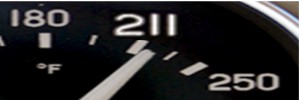 Remembering those who fought, died and were wounded at the Batte of the Somne.
Remembering those who fought, died and were wounded at the Batte of the Somne.
The 1st July is the anniversary of the start of the Battle of the Somne, probably one of the bloodiest battles of World War One. 60,000 British soliders were lost on the first day of the battle alone and by the time that battle ended in November 1916 over 1.1 million British, French and German troops had died.
The History Learning site said:
“For many years those who led the British campaign have received a lot of criticism for the way the Battle of the Somme was fought – especially Douglas Haig. This criticism was based on the appalling casualty figures suffered by the British and the French. By the end of the battle, the British Army had suffered 420,000 casualties including nearly 60,000 on the first day alone. The French lost 200,000 men and the Germans nearly 500,000.
Ironically, going over the top at the Somme was the first taste of battle many of these men had, as many were part of “Kitchener’s Volunteer Army” persuaded to volunteer by posters showing Lord Kitchener himself summoning these men to arms to show their patriotism.
Why was the battle fought?
For a number of months the French had been taking severe losses at Verdun – to the east of Paris. To relieve the French, the Allied High Command decided to attack the Germans to the north of Verdun therefore requiring the Germans to move some of their men away from the Verdun battlefield thus relieving the French. After the war, Sir William Robertson, Chief of the Imperial General Staff, explained what this strategy was:
Remembering the dissatisfaction by ministers at the end of 1915, because the operations had not come up to their expectations, the General Staff took the precaution to make quite clear beforehand the nature of success which the Somme campaign might yield. The necessity of relieving pressure on the French Army at Verdun remains, and is more urgent than ever. This is, therefore, the first objective to be obtained by the combined British and French offensive. The second objective is to inflict as heavy losses as possible upon the German armies.
Ironically, the head of the French Army, General Foch, believed that the attack in the Somme would achieve little – this view was shared by some leading British commanders such as General Henry Rawlinson. However, orders from the army’s political masters in London and Paris ensured that the battle would take place.
Just how backward military thinking was then is shown by the fact that the British put a regiment of cavalry on standby when the attack started to exploit the hole that would be created by a devastating infantry attack. British military faith was still being placed on cavalry attacks in 1916 when the nature of war in the previous two years would have clearly indicated that cavalry was no longer viable. This shows how conservative military thinking was during this war.
The battle at the Somme started with a weeklong artillery bombardment of the German lines. 1,738,000 shells were fired at the Germans. The logic behind this was so that the artillery guns would destroy the German trenches and barbed wire placed in front of the trenches. The use of artillery was heavily supported by Field Marshall Haig:
The enemy’s position to be attacked was of a very considerable character, situated on high, undulating tract of ground. (They had) deep trenches….bomb proof shelters……wire entanglements forty yards broad often as thick as a man’s finger. Defences of this nature could only be attacked with the prospect of success after careful artillery preparation
In fact, the Germans had deep dugouts for their men and all they had to do when the bombardment started was to move these men into the relative safety of the deep dugouts. When the bombardment stopped, the Germans would have known that this would have been the signal for an infantry advance. They moved from the safety of their dugouts and manned their machine guns to face the British and French.
The British soldiers advanced across a 25-mile front.
By the end of the battle, in November 1916, the British had lost 420,000, the French lost nearly 200,000 men and the Germans 500,000. The Allied forces had advanced along a thirty-mile strip that was seven miles deep at its maximum.
Lord Kitchener was a supporter of the theory of attrition – that eventually you would grind down your enemy and they would have to yield. He saw the military success of the battle as all-important. However, it did have dire political and social consequences in Britain. Many spoke of the “lost generation”. Many people found it difficult to justify the near 88,000 Allied men lost for every one mile gained in the advance.”
We shall remember them.





A stain on the political, military and Royal leadership of this country that time itself will never wash away. Nor should it, for it represents the officially approved mass slaughter of half a million young volunteers whose only fault was to place absolute trust in their own.
The Somme is the site that the cancer that went on to destroy the entire United Kingdom took hold. God how we need a similar number of brave and loyal volunteers to fight the nation’s enemy today. But then a corpse needs nothing, for there’s nothing that can be done to restore life once it’s been extinguished.